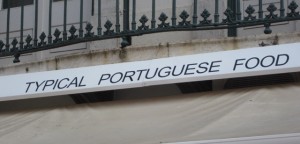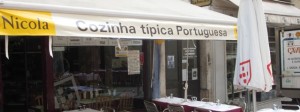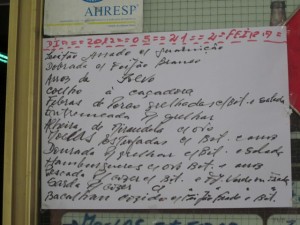The Obama-Romney presidential debates will no doubt affect the outcome of the November election and help determine the direction of America for the next four years. But the travel humor site BobCarriesOn.com, building on its reputation for being out in front of politically-related travel news since before Washington crossed the Potomac, was able to get both men together earlier in the year for a lively discussion on issues of even more importance to many of us – issues that effect cruise travel.
To show how much the two candidates are in touch with the pulse of the American voter, the meeting took place aboard a new Italian cruise ship, the MSC Divina, which was on its maiden voyage from St. Nazaire in France through the Straits of Gibraltar to Marseille, where it would be christened before beginning a season of Mediterranean itineraries. In virtual form, Obama and Romney appeared aboard the ship as guests of the humor website’s Chief White House Correspondent, Bob Payne, who has known both men since their college days, when the three of them may or may not have been held for questioning at the U.S. border following an attempt to sneak an undocumented Irish setter into the country by strapping it to the top of a wood-paneled station wagon.
Romney accepted the invitation, according to Payne, because he felt he would be able to count it as foreign policy experience, and Obama agreed to participate in the hope he could be Photoshopped into images of the christening in such a manner that it looked as if the crowd was cheering for him.
For much of the cruise, the candidates prepped for the debate and spent time getting to know each other in a way not usually possible on the campaign trail, in large part because a shortfall in the BobCarriesOn.com travel budget made it necessary for the two men to share a cabin.
Despite the forced intimacy, the president and the former governor got along surprisingly well. Romney only once made an unkind remark when, after Obama found himself suffering from a slight touch of sea-sickness off the coast of Spain, the Republican hopeful could not help from commenting “Now that’s what I call a green president.” And Obama could not let a similar opportunity go by when, after Romney went pale during a poolside session with the Divina’s activities staff, the president said, “They are going to personally introduce us to water sliding, Mitt, not water boarding.”
The debate itself was held on the one day the Divina spent entirely at sea so that neither candidate would have to miss an opportunity for shore-side bus rides. The event was held at the ship’s pool, allowing debate attendees to multitask. Here is a glimpse at how it went:
BCO: Imagine that the brand new Divina is far out in the Atlantic, and despite the best efforts of a shipyard workforce that spends 35 hours a week on the job, gets seven weeks of paid vacation, and retires early, the 3,502-passenger ship is leaking, and in danger of sinking. Would you allow it to be bailed out?
Obama: As a civilized society, we have a moral obligation to help out any sinking ship, at almost any cost. In return, of course, a government agency would need to take over at least 60 percent ownership, and the folks on board would have to do at least some of the bailing themselves.
Romney: Are those shipyard workers unionized?
BCO: Assume the ship is anchored in shallow water just off the French coast. You want to go ashore, but you know the news cameras are focused on you, and you know how touchy Europeans can be about environmental issues. So you want to depart in what appears to be the most earth-friendly way possible. Give us an argument for Row versus Wade.
Obama: The type of departure, or arrival, is not what’s important. What’s important is that every cruise passenger, whether paying full price for a superior ocean-view balcony suite or getting up to 82% off for an interior cabin somewhere down in the bowels of the ship, should have the freedom of choice. And it should be a private choice, between no one but the passenger and the person on the other end of the 800 line.
Romney: What Mr. Obama doesn’t tell you is that I had the same position he does. Until I changed it.
BCO: In their promotional literature, the Italian company that owns the Divina uses the phrase “We’ve taken care of everything for you.” As you know, that includes accommodation, dining, entertainment, fitness, relaxation, and transfers, all for one price. Does that kind of European-style social welfare have a place on a cruise ship?
Obama: Around the White House we don’t think of it as European-style social welfare. We think of it as providing the kind of necessary infrastructure and services folks will remember, especially at election time.
Romney: Even transfers?
BCO: One of the features of the Divina is the MSC Yacht Club, the exclusive area of the ship where we are and where your deluxe cabin is. On occasion, however, passengers who are not Yacht Club members have been seen slipping into the Yacht Club and even availing themselves of items from the desert tray during the afternoon tea service. Should some kind of barrier be built to keep them out?
Obama: I am opposed to any kind of barrier, because as experience has shown us, no matter how high, wide, or deep it is, folks will find a way around it whenever deserts are involved, especially that chocolate-dipped biscotti the crew has been putting out.
Romney: There are other passengers on the ship?
BCO: During one of the supervised activities at the Kids Club a child falls overboard. The ship could turn around to get him but it would mean having to cut short the shopping excursion planned for the next port. Based on that scenario, what are your views on “No child left behind.”?
Obama: When considering a question of this complexity it is critical to weigh all points of view before proceeding. How long would it take to turn the ship around? Are any special discounts being offered during the shopping excursion? How much would the cruise be enhanced for passengers who prefer not to see children on board?
Romney: In my family we were brought up to believe you leave no one behind. Even if you have to tie them to the roof.







